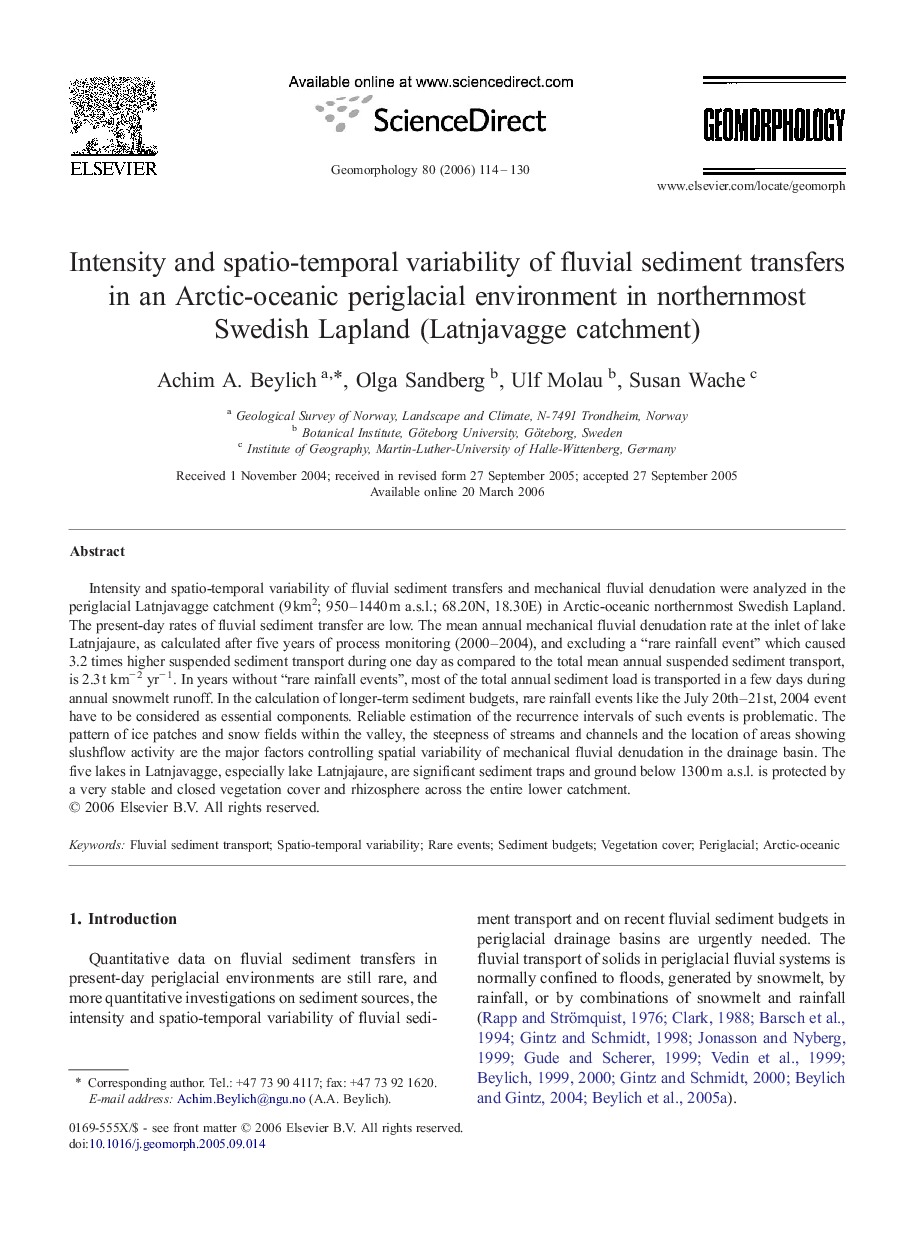| Article ID | Journal | Published Year | Pages | File Type |
|---|---|---|---|---|
| 4687541 | Geomorphology | 2006 | 17 Pages |
Abstract
Intensity and spatio-temporal variability of fluvial sediment transfers and mechanical fluvial denudation were analyzed in the periglacial Latnjavagge catchment (9 km2; 950-1440 m a.s.l.; 68.20N, 18.30E) in Arctic-oceanic northernmost Swedish Lapland. The present-day rates of fluvial sediment transfer are low. The mean annual mechanical fluvial denudation rate at the inlet of lake Latnjajaure, as calculated after five years of process monitoring (2000-2004), and excluding a “rare rainfall event” which caused 3.2 times higher suspended sediment transport during one day as compared to the total mean annual suspended sediment transport, is 2.3 t kmâ 2 yrâ 1. In years without “rare rainfall events”, most of the total annual sediment load is transported in a few days during annual snowmelt runoff. In the calculation of longer-term sediment budgets, rare rainfall events like the July 20th-21st, 2004 event have to be considered as essential components. Reliable estimation of the recurrence intervals of such events is problematic. The pattern of ice patches and snow fields within the valley, the steepness of streams and channels and the location of areas showing slushflow activity are the major factors controlling spatial variability of mechanical fluvial denudation in the drainage basin. The five lakes in Latnjavagge, especially lake Latnjajaure, are significant sediment traps and ground below 1300 m a.s.l. is protected by a very stable and closed vegetation cover and rhizosphere across the entire lower catchment.
Related Topics
Physical Sciences and Engineering
Earth and Planetary Sciences
Earth-Surface Processes
Authors
Achim A. Beylich, Olga Sandberg, Ulf Molau, Susan Wache,
